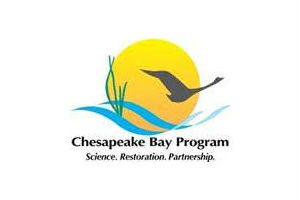
These data update the 2013-14 High-Resolution Land Use Data Project, provide new land use and land cover data captured in 2017-18 and include a new data product that describes the changes in land use and land cover throughout the Chesapeake Bay watershed from 2013-14 to 2017-18.
In 2018, the U.S. Environmental Protection Agency entered into a six-year cooperative agreement with the Chesapeake Conservancy to produce land use, land cover and land change data for the watershed. This effort was intended to build upon the release of the initial one-meter data products in 2016 and 2017 that were the first and largest high-resolution land use/land cover datasets ever developed for the Chesapeake Bay watershed. When these products were released in 2016 and 2017, they provided more precise information showing small tracts of woods and individual trees in urban areas.
The new 2017-18 dataset includes a more detailed land use/land cover classification with enhanced technical and scientific information that was not previously available for the 2013-14 data products. Experts have now updated the 2013-14 datasets with this new information and are releasing a brand-new 2017-18 product. The new 2017-18 and revised 2013-14 datasets contain 54 land use/land cover classes that are grouped into a general 18 class schema. This new release includes 38 more land use/land cover classes than the original 2013-14 data product.
These data cover 99,000 square miles–an area comprising 206 counties that intersect or are adjacent to the Chesapeake Bay watershed. They will inform Chesapeake Bay Total Maximum Daily Load planning efforts that will help watershed jurisdictions make progress toward meeting their pollutant reduction goals. In addition, the 1-meter data support the goals and outcomes of the Chesapeake Bay Watershed Agreement by helping partners of the Chesapeake Bay Program improve their ability to measure and focus environmental, community and economic benefits, such as determining improvements in air quality, reducing flooding risks, energy savings, carbon sequestration, advancements in environmental justice and enhancements in stormwater management.
To complement these updated and new datasets, change data are being offered for the very first time. This is the first such product to map change at this large scale. The change data will inform powerful insights about how our watershed is transforming. It will help guide actions and decisions to make progress toward meeting land management goals, including monitoring changes in tree canopy, determining how much carbon is stored in forests, and mapping wildlife habitat, ecologically sensitive lands and areas where environmental restoration can provide the most benefit. Additionally, these data can track how lands transition into being developed or used for agricultural production, as well as other changes that impact water quality and the environment as a whole.
The Very High-Resolution Land Use/Land Cover change data are currently limited to a 4–5-year span, as these novel data have only been developed for two time periods at this point (2013-14 and 2017-18) for each county in the Chesapeake Bay watershed. Because one-by-one meter data has not been produced using imagery prior to 2013, moderate 30-by-30 meter resolution data, produced by the U.S. Geological Survey, are used to assess land use/land cover prior to that time. These data will continue to be important in understanding long-term trends in human activities across the Chesapeake Bay watershed.
This is the largest amount of open data at this scale that has ever been made available, and it’s free for anyone to use. The 2017-18 land cover and land use data, as well as the change data can be accessed at www.chesapeakeconservancy.org/conservation-innovation-center/high-resolution-data/lulc-data-project-2022.
A webinar explaining how to access and use the data is available will be held on Tuesday, May 24 from 1:00 p.m.-2:30 p.m. Visit this link to register for the webinar. The next iteration of land use/land cover and change data is expected in 2024, representing the 2021-22 timeframe.










